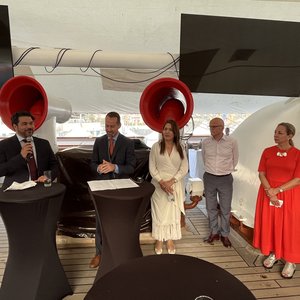Stirling strain of tilapia is first to have its genome sequenced
Professor Brendan McAndrew, Dr David Penman and Keith Ranson in the Tropical Aquarium Facility of the Institute of Aquaculture, holding a “wild type” (normal color) tilapia (left) and a red tilapia (right).Researchers have made a breakthrough in sequencing the complete genome of the Nile tilapia, one of the world’s most important cultured food fishes.
Using DNA from a special line of tilapia developed in the Institute of Aquaculture at the University of Stirling, Scotland, the sequencing was carried out by the Broad Institute (part of MIT, near Boston in the USA). This is the first commercial aquaculture species to have its genome sequenced.
The Nile tilapia (Oreochromis niloticus) is the most important cultured foodfish globally after carp, even outstripping salmon, and is closely related to the huge flocks of cichlid species in the East African Rift Valley lakes which are studied by evolutionary biologists.
Dr David Penman of the Institute of Aquaculture explained: “This tilapia line was developed to have two identical copies of every part of its genome (normally vertebrates show some differences between the genes inherited from the mother and father), which simplified the processing of the genome sequence data.
“The sequence and associated data are now available to the scientific community worldwide, and should contribute to further advances in both basic science and aquaculture research. For example, this should help us to find important genes affecting traits such as disease resistance, growth rate and sex determination, allowing more precisely targeted selection to improve aquaculture performance.”
Professor Brendan McAndrew and Dr Penman have led research into the development of other lines of tilapia in the Tropical Aquarium facility at the Institute of Aquaculture, and these have been supplied to aquaculture operations around the world. These allow production of red tilapia, favoured in some markets, and nearly all-male populations, which prevents breeding in culture ponds before harvest. Developing such lines has taken years of research by students and staff at the Institute, with funding from a variety of sources including BBSRC and DFID.










